Unlock the secrets to higher Google rankings and drive more traffic to your website
Are you looking to improve your website’s visibility on Google and drive more traffic to your site? If so, you’re in the right place! In this post, we’ll be sharing some insider secrets for ranking on Google that you may not have heard before.
First, let’s start with a quick overview of what Google ranking is all about. When you search for something on Google, the search engine uses algorithms to determine the most relevant and useful results to show you. This process is known as Search Engine Optimization, or SEO for short.
There are a number of factors that can affect your website’s ranking on Google, including the relevance and quality of your content, the technical specifications of your site, and the number and quality of backlinks pointing to your site. By understanding and optimizing for these factors, you can improve your website’s visibility and drive more traffic.
Now, let’s dive into the secrets to ranking on Google:
1. Keyword Research

One of the first steps in SEO is identifying the keywords that people are using to search for the type of content you offer. By including these keywords in your website’s content, you can help Google understand what your site is about and improve your chances of ranking for those terms.
There are a number of tools available to help you with keyword research, such as Google’s Keyword Planner and Ahrefs.
These tools can help you identify the most popular and relevant keywords for your niche and provide information on their search volume and competition level.
For more details, read our article about the most effective way to do keyword research from 2023.
2. Understanding Search Intent
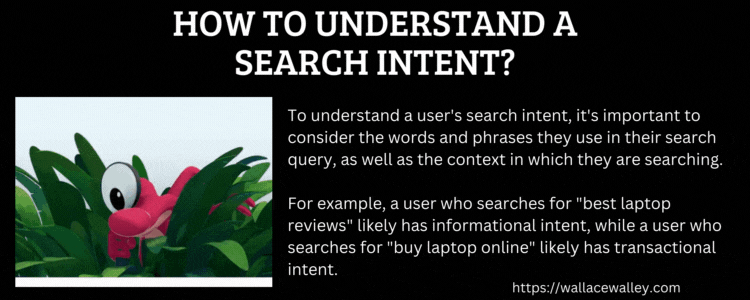
In addition to using the right keywords, it’s important to understand the search intent behind a particular query.
In other words, what is the person searching for? Are they looking for information, a product to buy, or something else?
By understanding the search intent behind a particular query, you can tailor your content to better meet the needs of your audience.
For example, if someone is searching for a specific product, they are likely looking to make a purchase. In this case, it’s important to provide information on the product, as well as a clear call to action to purchase.
3. Outlining Your Blog Post
Before you start writing your blog post, it’s a good idea to create an outline. This will help you organize your thoughts and ensure that your post is structured in a logical and easy-to-follow manner.
Your outline should include the main points you want to cover, as well as any subpoints or supporting information.
It’s also a good idea to include your target keywords in your outline, as this will help you ensure that they are incorporated naturally into your post. Below is the outline for this post you are reading:
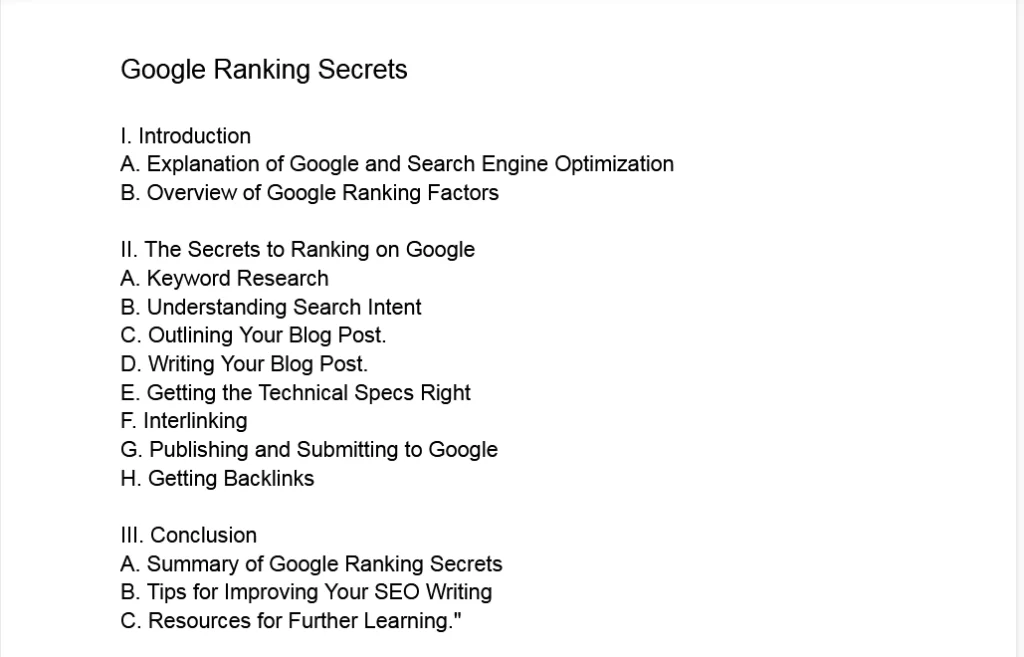
4. Writing Your Blog Post
Once you have your outline in place, it’s time to start writing your blog post. When writing for SEO, it’s important to keep a few things in mind:
- Use your target keywords naturally and avoid stuffing them into your content.
- Make sure your content is high quality and provides value to your readers. Read here how to write SEO-friendly blog posts.
- Use headings and subheadings to break up your content and make it easier to read. This is an article on how to write SEO-friendly headlines
- Use internal linking to other relevant content on your site. This will help Google understand the theme of your site and can also improve the user experience.
5. Getting the Technical Specs Right
In addition to the content of your site, there are a number of technical factors that can affect your search rankings. These include the speed of your site, the use of responsive design, and the presence of a sitemap.
To ensure that your site is technically optimized for search engines, it’s a good idea to use a tool like Google’s PageSpeed Insights to identify any issues and make improvements.
This can help your site load faster, which can improve the user experience and boost your rankings.
It’s also important to ensure that your site is mobile-friendly and uses responsive design.
With more and more people accessing the internet on their phones, it’s crucial that your site is easy to use and navigate on smaller screens.
Finally, make sure that you have a sitemap in place. A sitemap is a file that lists all the pages on your site and helps search engines understand the structure and hierarchy of your content. This can help improve the indexing of your site and boost your rankings.
Related topic: Top 10 technical SEO techniques for 2023
6. Internal linking
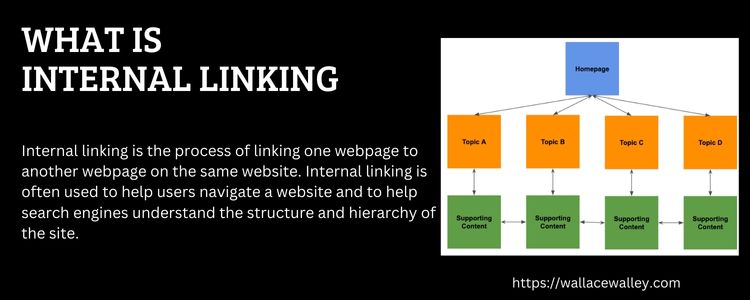
Internal linking refers to the process of linking to other pages on your own website from within your content. This can help improve the user experience by allowing readers to navigate between related content on your site easily.
In addition to improving the user experience, internal linking can also help with SEO.
By linking to other pages on your site, you can pass along some of the authority and relevance of those pages to the linked page.
This can help improve the rankings of the linked page, as well as increase the overall authority of your site.
7. Publishing and Submitting to Google
Once you have completed your blog post and made sure it is technically optimized, it’s time to publish it and submit it to Google.
To do this, you will need to add your site to Google Search Console and submit your sitemap. This will help Google discover and index your new content.
In addition to submitting your sitemap, it’s a good idea to manually submit your new blog post to Google. This can help speed up the indexing process and get your content in front of a wider audience more quickly.
8. Getting Backlinks
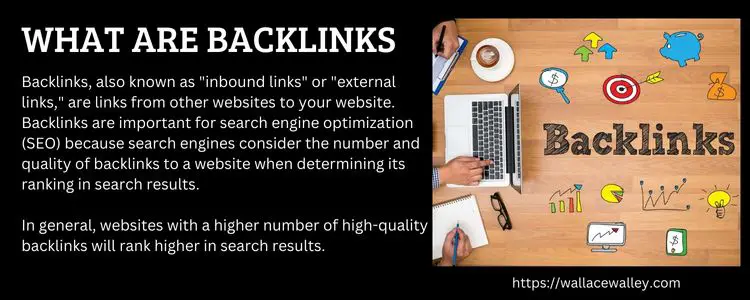
In addition to the content and technical factors, another important element of SEO is backlinks. These are links from other websites that point to your site.
The more high-quality backlinks you have pointing to your site, the more authoritative and relevant Google will consider your site to be.
There are a number of ways to get backlinks, including guest blogging, broken link building, and creating shareable content.
It’s important to focus on getting high-quality backlinks from reputable websites, as low-quality or spammy links can actually harm your rankings.
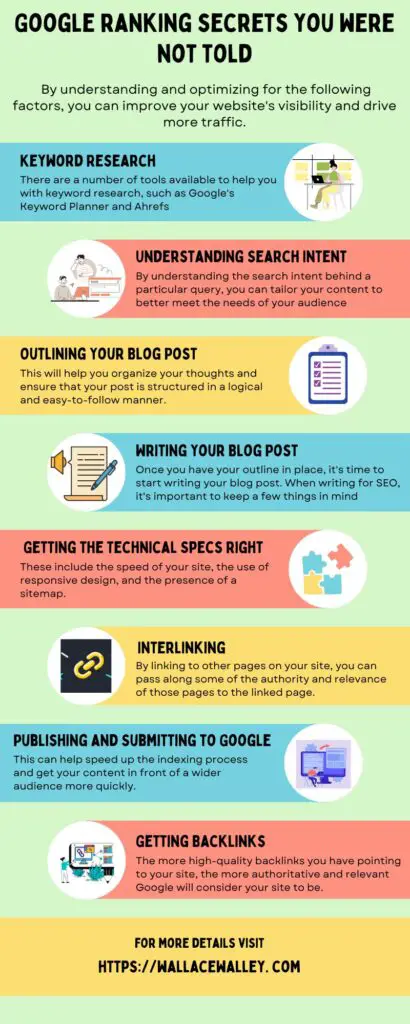
Conclusion on Google ranking secrets you were not told
So there you have it – our top secrets for ranking on Google! By understanding and implementing these techniques, you can improve your website’s visibility and drive more traffic.
But that’s not all – here are a few extra tips to help you improve your SEO writing:
- Write for your audience, not for search engines. While it’s important to include your target keywords, the primary focus should be on creating high-quality content that provides value to your readers.
- Keep your content up to date. Google favors fresh, relevant content, so it’s important to regularly update your site with new and relevant information.
- Use descriptive and relevant titles and meta descriptions. These tags help Google understand the content of your page and can also help improve your click-through rate.
If you’re looking to learn more about SEO and how to optimize your website, there are a number of great resources available. Some of our favorites include
- Google’s Search Engine Optimization Starter Guide,
- Moz’s Beginner’s Guide to SEO,
- SEO for beginners by Yoast Academy
- The Semrush SEO fundamentals course
- And many more.
By continuing to learn and improve your skills, you can drive even more success to your website or blog.
